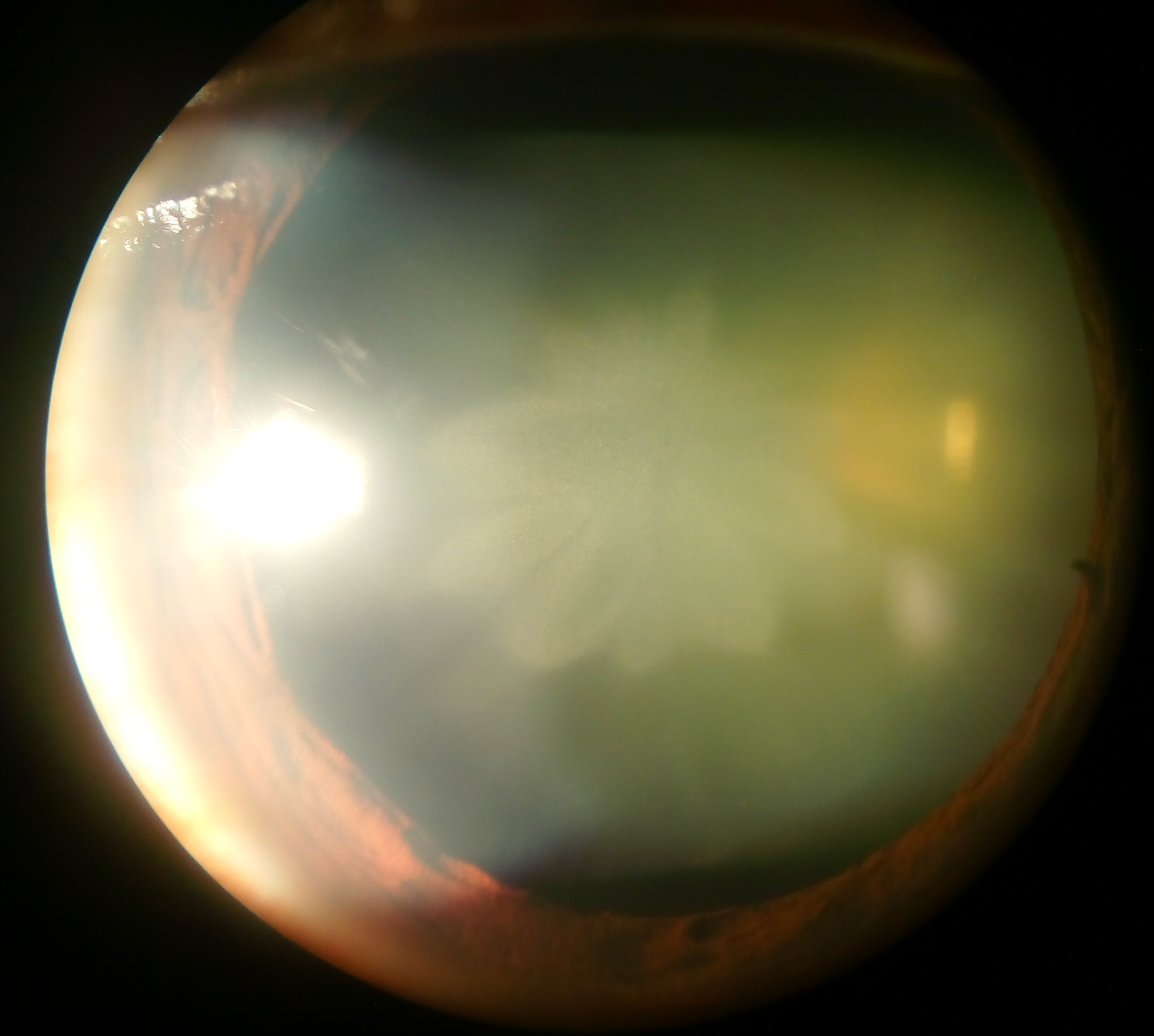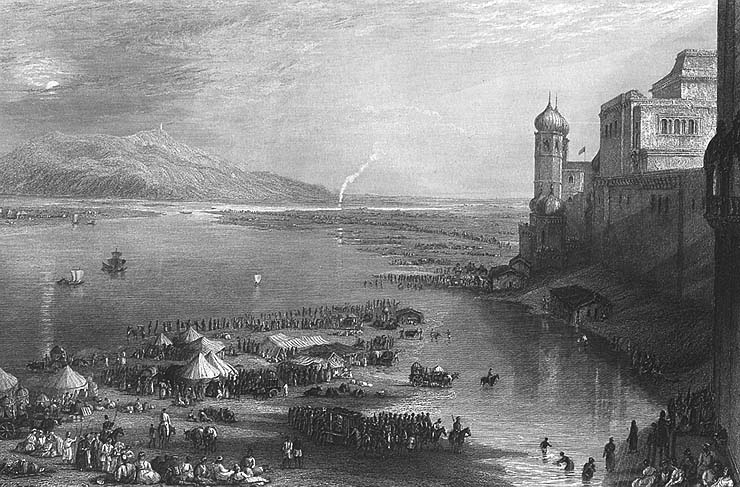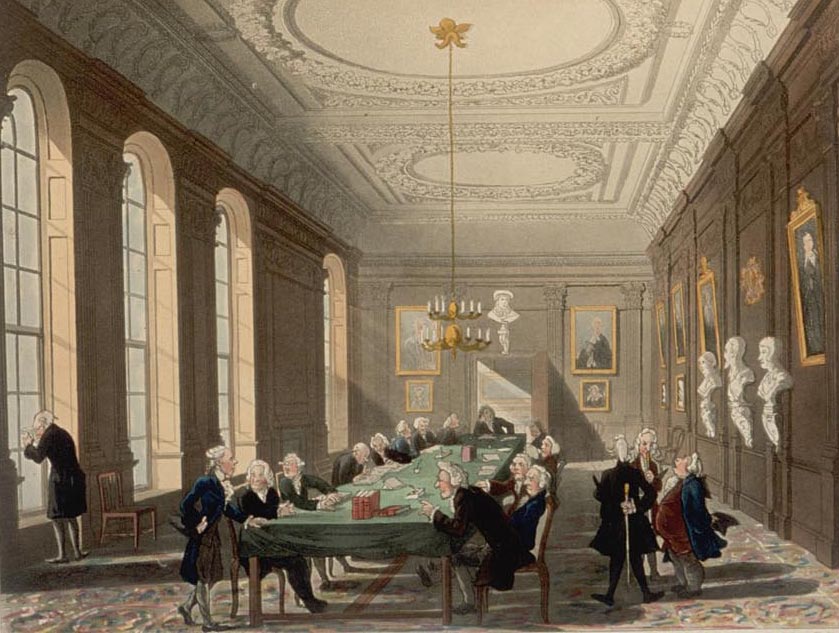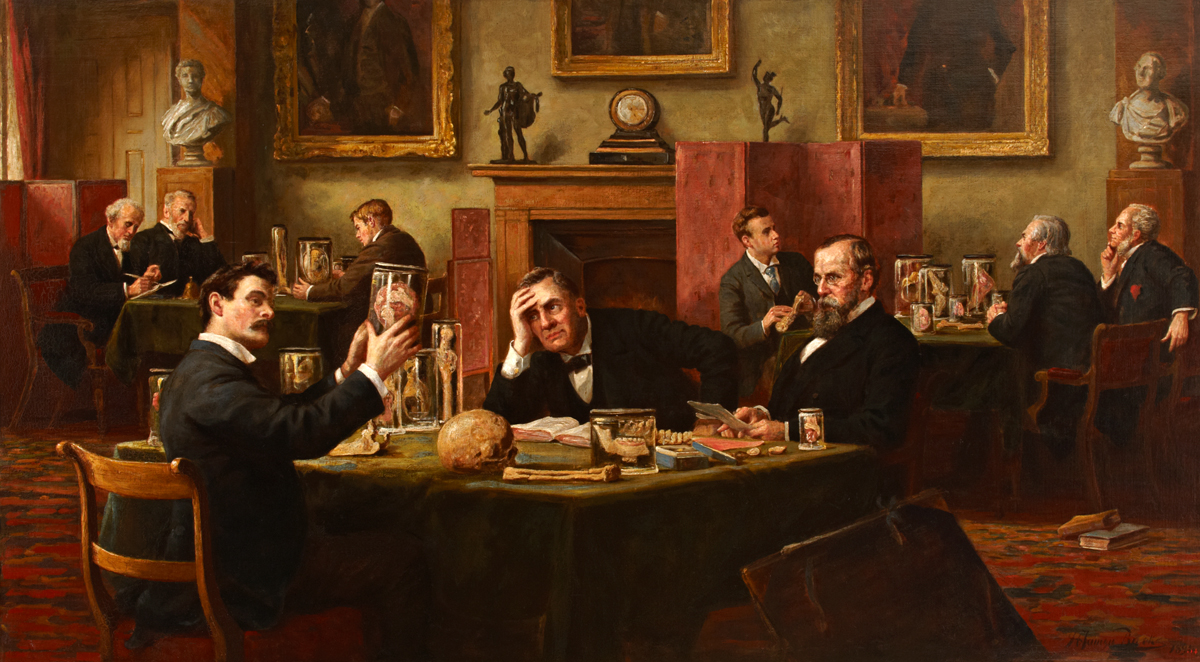|
Herbert Herbert
Lieutenant-Colonel Herbert Herbert, FRCS (25 February 1865 – 19 March 1942) was a British ophthalmologist and officer in the Indian Medical Service (IMS), known for his work on trachoma, cataract and glaucoma. Later, he was vice-president of the Ophthalmological Society of the UK. Herbert was commissioned with the IMS in 1887, and served in the Middle East and the Gulf of Aden in 1890, as surgeon. He became a Fellow of the Royal College of Surgeons in 1891, and around that time took an interest in diseases of the eye. In 1892, he was appointed professor at the Grant Medical College (GMC) and first surgeon at the Jamshedjee Jeejeebhoy Hospital (JJ Hospital). The following year, he became civil surgeon at Kheda, Gujarat. In India, he reported on cholera epidemics and his papers included "Rainfall and Seasonal Cholera" (1894) and "The Natural History of Hardwar Fair Cholera Outbreaks" (1895). In 1897 he was ophthalmic surgeon to JJ Hospital and professor of ophthalmic surgery at G ... [...More Info...] [...Related Items...] OR: [Wikipedia] [Google] [Baidu] |
Leeds Medical School
The School of Medicine is the medical school of the University of Leeds, in the city of Leeds, West Yorkshire, England. The School of Medicine was founded in 1831. The School of Medicine now forms part of the University's Faculty of Medicine and Health. The School is composed of institutes located at multiple sites in West Yorkshire including the Worsley Building, LIGHT, St James's Campus, and Chapel Allerton Hospital. The School of Medicine is primarily linked with two major hospitals for clinical teaching: the Leeds General Infirmary and St James's University Hospital, Leeds, St James's University Hospital, both run by the Leeds Teaching Hospitals NHS Trust, alongside smaller district NHS Trusts. History On 6 June 1831 six physicians and surgeons set up the Leeds Medical School with the aim: The Medical School admitted its first students in October of that year. It was one of ten provincial medical schools founded in the ten years between 1824 and 1834. The founders were: ... [...More Info...] [...Related Items...] OR: [Wikipedia] [Google] [Baidu] |
Eosinophil
Eosinophils, sometimes called eosinophiles or, less commonly, acidophils, are a variety of white blood cells and one of the immune system components responsible for combating multicellular parasites and certain infections in vertebrates. Along with mast cells and basophils, they also control mechanisms associated with allergy and asthma. They are granulocytes that develop during hematopoiesis in the bone marrow before migrating into blood, after which they are terminally differentiated and do not multiply. These cells are eosinophilic or "acid-loving" due to their large acidophilic cytoplasmic granules, which show their affinity for acids by their affinity to coal tar dyes: Normally transparent, it is this affinity that causes them to appear brick-red after staining with eosin, a red dye, using the Romanowsky method. The staining is concentrated in small granules within the cellular cytoplasm, which contain many chemical mediators, such as eosinophil peroxidase, ribonucl ... [...More Info...] [...Related Items...] OR: [Wikipedia] [Google] [Baidu] |
Royal Sussex County Hospital
The Royal Sussex County Hospital is an acute teaching hospital in Brighton, England. Together with the Princess Royal Hospital, it is administered by the University Hospitals Sussex NHS Foundation Trust. The services provided at the hospital include an emergency department, cancer services at the Sussex Cancer Centre, cardiac surgery, maternity services, and both adult and neonatal intensive care units. History The main building was designed by Charles Barry, who was later architect for the Houses of Parliament, and is still called the Barry Building. The foundation stone was laid by the Earl of Egremont on 16 March 1826, and the hospital was opened as the Sussex County Hospital on 11 June 1828. The Victoria Wing was added in 1839, and the Adelaide Wing was opened in 1841. The Sussex County Hospital became the Royal Sussex County Hospital in about 1911. On New Year's Day 1872, a fire broke out on the top floor of the Adelaide Wing of the hospital, in Ward 6. Initially this fire ... [...More Info...] [...Related Items...] OR: [Wikipedia] [Google] [Baidu] |
West Worthing
West Worthing is a neighbourhood of Worthing in West Sussex, England that was developed within Heene and later expanded beyond Heene's boundaries. Intended as an exclusive resort, the township of West Worthing was developed from around 1864 and merged with the formerly separate township of Worthing in 1890, when Worthing gained borough status. Heene is a former civil parish, now part of the borough of Worthing. It lies on the A259 road 0.6 miles (1 km) west of the town centre. Once part of the parish of West Tarring, Heene was a civil parish in its own right from the 16th century until 1902. Etymology Heene comes from the word ''hīun'' or ''hīwun'' meaning family or household. Geography The borders of the former civil parish of Heene are defined by the Teville Stream and Tarring Road to the north and Elm Grove and Wallace Avenue (once known as Sea Lane) to the west. West Worthing encompasses this area and extends west to the boundary with Goring at George V Avenue. ... [...More Info...] [...Related Items...] OR: [Wikipedia] [Google] [Baidu] |
Cataract
A cataract is a cloudy area in the lens (anatomy), lens of the eye that leads to a visual impairment, decrease in vision of the eye. Cataracts often develop slowly and can affect one or both eyes. Symptoms may include faded colours, blurry or double vision, halos around light, trouble with bright lights, and Nyctalopia, difficulty seeing at night. This may result in trouble driving, reading, or recognizing faces. Poor vision caused by cataracts may also result in an increased risk of Falling (accident), falling and Depression (mood), depression. Cataracts cause 51% of all cases of blindness and 33% of visual impairment worldwide. Cataracts are most commonly due to senescence, aging but may also occur due to Trauma (medicine), trauma or radiation exposure, be congenital cataract, present from birth, or occur following eye surgery for other problems. Risk factors include diabetes mellitus, diabetes, longstanding use of corticosteroid medication, smoking tobacco, prolonged exposu ... [...More Info...] [...Related Items...] OR: [Wikipedia] [Google] [Baidu] |
Virulence
Virulence is a pathogen's or microorganism's ability to cause damage to a host. In most cases, especially in animal systems, virulence refers to the degree of damage caused by a microbe to its host. The pathogenicity of an organism—its ability to cause disease—is determined by its virulence factors. In the specific context of gene for gene systems, often in plants, virulence refers to a pathogen's ability to infect a resistant host. Virulence can also be transferred using a plasmid. The noun ''virulence'' (Latin noun ) derives from the adjective ''virulent'', meaning disease severity. The word ''virulent'' derives from the Latin word ''virulentus'', meaning "a poisoned wound" or "full of poison". The term ''virulence'' does not only apply to viruses. From an ecological standpoint, virulence is the loss of fitness induced by a parasite upon its host. Virulence can be understood in terms of proximate causes—those specific traits of the pathogen that help make the host ... [...More Info...] [...Related Items...] OR: [Wikipedia] [Google] [Baidu] |
Vibrio Cholerae
''Vibrio cholerae'' is a species of Gram-negative bacteria, Gram-negative, Facultative anaerobic organism, facultative anaerobe and Vibrio, comma-shaped bacteria. The bacteria naturally live in Brackish water, brackish or saltwater where they attach themselves easily to the chitin-containing shells of crabs, shrimp, and other shellfish. Some strains of ''V. cholerae'' are pathogenic to humans and cause a deadly disease called cholera, which can be derived from the consumption of undercooked or raw marine life species or drinking contaminated water. ''V. cholerae'' was first described by Félix-Archimède Pouchet in 1849 as some kind of protozoa. Filippo Pacini correctly identified it as a bacterium and from him, the scientific name is adopted. The bacterium as the cause of cholera was discovered by Robert Koch in 1884. Sambhu Nath De isolated the cholera toxin and demonstrated the toxin as the cause of cholera in 1959. The bacterium has a flagellum (a tail like structure) at one ... [...More Info...] [...Related Items...] OR: [Wikipedia] [Google] [Baidu] |
Haridwar Kumbh Mela
Haridwar Kumbh Mela is a mela, associated with Hinduism and held in the city of Haridwar, India held every 12 years. The exact date is determined according to Hindu astrology: the Mela is held when Jupiter is in Aquarius and the Sun enters Aries. The event possesses deep religious significance to Hindus as well as other spiritual seekers. Historically, it was an important commercial event and was attended by merchants from as far as Arabia. The Haridwar Kumbh Mela had happened from 1 April to 30 April in the year 2021 amidst the COVID-19 pandemic. An Ardh Kumbh ("Half Kumbh") Mela is held six years after a Kumbh Mela. The last Ardh Kumbh Mela took place in 2016. Early records Haridwar is one of the four sites of Kumbh Mela, the others being Prayag (Allahabad), Trimbak (Nashik), and Ujjain. Although there are several references to riverside bathing festivals in ancient Indian literature, the exact age of the Kumbh Mela is uncertain. The fair at Haridwar appears to be th ... [...More Info...] [...Related Items...] OR: [Wikipedia] [Google] [Baidu] |
Rajkot
Rajkot () is the fourth-largest city in the Indian state of Gujarat Gujarat () is a States of India, state along the Western India, western coast of India. Its coastline of about is the longest in the country, most of which lies on the Kathiawar peninsula. Gujarat is the List of states and union territories ... after Ahmedabad, Surat, and Vadodara, and is in the centre of the Saurashtra (region), Saurashtra region of Gujarat. Rajkot is the 35th-largest metropolitan area in India, with a population of more than 2 million as of 2021. Rajkot is the 6th cleanest city of India, and it is the 22nd fastest-growing city in the world as of March 2021.10L Population cities) in India according to 'Swachh Vayu Survekshan 2024 Results' Demographics As of the 2011 Census of India, Rajkot recorded a total population of 1,390,640. Rajkot city has an average literacy rate of 82.20%, higher than the national average. The population is 52.43% male and 47.47% female. Most of the po ... [...More Info...] [...Related Items...] OR: [Wikipedia] [Google] [Baidu] |
LRCP
The Royal College of Physicians of London, commonly referred to simply as the Royal College of Physicians (RCP), is a British professional membership body dedicated to improving the practice of medicine, chiefly through the accreditation of physicians by examination. Founded by royal charter from King Henry VIII in 1518, as the College of Physicians, the RCP is the oldest medical college in England. The RCP's home in Regent's Park is one of the few post-war buildings to be listed at Grade I. In 2016 it was announced that the RCP was to open new premises in Liverpool at The Spine, a new building in the Liverpool Knowledge Quarter. The Spine opened in May 2021. History The college was incorporated as "the President and College or Commonalty of the Faculty of Physic in London" when it received a royal charter in 1518, affirmed by Act of Parliament in 1523. It is not known when the name "Royal College of Physicians of London" was first assumed or granted. It came into use a ... [...More Info...] [...Related Items...] OR: [Wikipedia] [Google] [Baidu] |
Royal College Of Surgeons Of England
The Royal College of Surgeons of England (RCS England) is an independent professional body and registered charity that promotes and advances standards of surgery, surgical care for patients, and regulates surgery and dentistry in England and Wales. The college is located at Lincoln's Inn Fields in London. It publishes multiple medical journals including the ''Annals of the Royal College of Surgeons of England'', the ''Faculty Dental Journal'', and the ''Bulletin of the Royal College of Surgeons of England''. History The origins of the college date to the fourteenth century with the foundation of the "Guild of Surgeons Within the City of London". Certain sources date this as occurring in 1368. There was an ongoing dispute between the surgeons and barber surgeons until an agreement was signed between them in 1493, giving the fellowship of surgeons the power of incorporation. This union was formalised further in 1540 by Henry VIII of England, Henry VIII between the Worshipful Compa ... [...More Info...] [...Related Items...] OR: [Wikipedia] [Google] [Baidu] |
Tranmere, Cheshire
Tranmere is a suburb of Birkenhead, on the Wirral Peninsula, England. Administratively, it is within the Birkenhead and Tranmere Ward of the Metropolitan Borough of Wirral, in Merseyside. Before local government reorganisation on 1 April 1974, it was part of the County Borough of Birkenhead, within the county of Cheshire. At the 2001 census, the population of Tranmere was 11,668. By the 2011 census the suburb was combined with the centre of Birkenhead. The population was recorded as 15,879. History Its name was given by Norwegian Vikings who settled and colonised Wirral in the 10th century. Tranmere in Old Norse is ''Trani-melr'', meaning "crane (bird) sandbank" or "sandbank with the cranes". Until the early 19th century, Tranmere was the second most populous settlement in Wirral, with a population of 353 in 1801, centred mainly in the area of what is now Church Road and the nearby hamlet of Hinderton. By 1901, the number of residents had grown to 37,709. Tranmere Old Hal ... [...More Info...] [...Related Items...] OR: [Wikipedia] [Google] [Baidu] |







